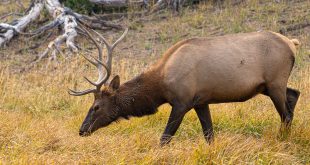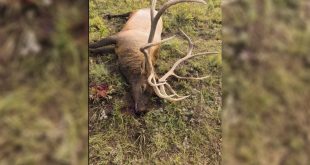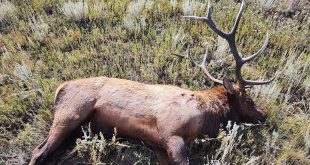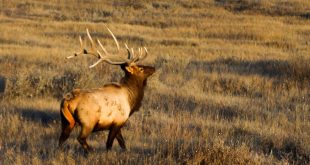
The controversial and high publicized changes to the deer and elk regulations have been passed by the Montana FWP Game Commission. Many residents expressed their concerns about the “rushed” changes but the commission declared too much work had already been done on these changes so they passed them, with the addition of a few amendments. Nearly all of Montana is going to see hunting district boundary changes and many are going to have number changes. The 900 archery elk license has been discontinued and each unit managed individually with the intent to address the elk populations on private property that the general public does not have access to hunt. The one thing that most folks did approve of, who were there for public commenting, was to require all permits to be first and only choice so if you draw that permit you are restricted to hunt in that permit only. Region 4 saw the biggest changes but they were mostly for private property. Permits were reduced and changed to unlimited which will give the outfitters and landowners a little more freedom to sell hunts where the general public is not allowed to hunt.
It was also noted that mule deer numbers are declining in most areas with Regions 2 and 7 getting the most attention. Due to the Region 2 deer permit areas being moved to general, seasons were shortened to three weeks to prevent over-harvest. Biologists noted that areas where elk populations are thriving, mule deer populations are declining. This has also been suggested in studies from the past when it comes to declining mule deer numbers. Mule deer always seem to avoid thriving elk populations.
In short, Montana has shuffled the deck and you’ll want to stay tuned to TagHub for up to date information as things shake out and pay close attention to Montana FWP press releases and their website. One thing is certain, it will be interesting to see how this all plays out.
 Eastmans' Official Blog | Mule Deer, Antelope, Elk Hunting and Bowhunting Magazine | Eastmans' Hunting Journals
Eastmans' Official Blog | Mule Deer, Antelope, Elk Hunting and Bowhunting Magazine | Eastmans' Hunting Journals





Forced competition ! The mule deer cannot and will not compete with larger grazers. Cattle, elk, sheep etc which totally over graze and in time eliminate prime browse and graze sources. Everywhere, all the time.
Looking at photos of areas 15-25-35 years ago most the best areas which I previously hunted in the past are nearly devoid of quality browse now (like Jack-S). Hard to find any big stands of Antelope Brush/Buck Brush etc etc. Nearly every animal harvested years ago had a gut full of quality preferred browse. Now almost zero do.
Force the deer into tighter confines then you have un-natural and bad things happen, such as disease and population reductions for the weakest in the chain, or in this case least tolerant.
Controlled burns coupled with improved food sources (seeded/planted/monitored) provide the “most bang for the buck” pun intended. However, its is the lowest, most difficult and least funded solution (instead spend millions on worthless research).
Even in areas where habitat improvement solution was prioritized, the competition still wins out and beats the weak, the mule deer.
Do it on your own property and see the results. Hint, the habitat improvement we see by our more East of the Rockies comrades for Whitetail Deer works, its proof positive ! They improve the habitat, reduce predators, improve the cover etc. We have a lot of whitetails these days, wonder why? Maybe do a study to find out.
The result of QDM and other private actions etc is big healthy whitetail deer population due to (mostly private) landowner habitat improvement. NO one does that for Mule Deer, do they ? Can anyone see a difference in the results by comparison. What’s different ?
Also, Planned and managed Rotational grazing based on anti-competitiveness seems to part of the solution to elevate the desired specie along with its vibrance and health.
For instance beside QDM for Whitetails, solid science based facts surrounding habitat protection for Bighorn Sheep and the resultant effects are another good example. Aspects of this/these same methodology should be broadened for Mule Deer.
Keep non-native grazers out of sheep areas, and improve the food source has certainly resulted in a few more Sheep. When you have the wrong focus you get the wrong results.
Its how it works, no need for a deeper study, see the 2 examples above. Focused Habitat Improvement and reduced competition = success- KISS
Welcome to Montexico! It’s the Newest New Mexico!!! Come on buy a private land elk tag in the premier elk areas! They are only 16K! Pocket change. I have lived in Montana my whole life. My entire family for 4 generations have been born, raised and died in this great state. We have hunted then entire state throughout the years in one corner or the other. WHAT THE HELL is FWP thinking?? They flat admitted they don’t listen to common folks! Too much work went into what? Privatizing our wildlife and giving landowners who won’t let you hunt elk on their places? Yet complain about over population and want help. They get to reap the rewards of keeping it orange???? Blocking public lands by a pointy little corner? Yes I’m talking corner crossing here! This is getting ridiculous. They get to graze these public lands yet we can’t hunt it? To heck with storming the white house. Maybe we should visit Helena FWP office? They may listen to the common folks then?
My sentiments exactly. I made a lengthy comment on all the district options pointing out FWP’s flawed claim that elk are overpopulated. MT has more land and more public land than CO yet we have far less elk. I gave them exact numbers to prove this. WE DO NOT HAVE TOO MANY ELK!! Only wealthy private land owners with connections supposedly have too many in their own minds. This was a handout to private land owners.
Orion, how much would you say wild horses are affecting things? Seems to be a topic a bit swept under the rug, yet extremely influential.
Jarrod – speaking only from pure experience – not science. A unit I hunted for 6 years was infested with wild horses. It actually had a formal federal designation for wild horse mgt. spending on average 3 weeks each archery season for those 6 years in observance – acceptance was a 1 way road for the relationship.
Elk were 100% intolerant of the horse and were very aware of the horses routine – the elk adapted and adjusted but I ask why. The horse is an non native invasive specie just like the wild pig. Some have created a hierarchy of specie and horses must have scored high enough. The wild bison has little support for reintroduction by comparison and is native and outside of maybe 4 small places are being reintroduced.
Some idiots will suggest horses and elk or mule deer and elk don’t compete. Those people are clueless. Those people spend 1-2 weeks of annual vacation time in the wild and their focus is not the myriad of surrounding factors going on – but rather they 100% focused on trying to harvest. They are Myopic versus big picture of the total environment and myriad of factors in play.
Maybe Look back and see that elk were largely a plains animal. Where do now see them as a player in the plains as plains animal. The areas these elk can largely be on the plains are maybe the best draw areas in the nation – ie, Missouri breaks. Historically mule deer and did not compete as they used to have a very succinct geographic separation.
These horses would in fact sit for hours on the scarce water source and prevent access to the dehydrated elk. The result was increased nocturnal activity. Fact I observed not once but constantly.
The only good thing was seeing on 3 occasions either actual takedown or stalking of horses by Mtn lions. The wild horse seemed an easier target than elk. Doubt that is the case during elk calving and mid summer but rather later as in during hunt season these mtn lion shifted focus to following packs of horses.
Take all above as opinion based on observation.
Thanks. Yeah, my observations too, but in other states out west. Classic case of emotional attachments overriding intelligent, fact-based science.
Deer and Elk don’t compete for feed so much, however, they do compete for water. Also, at times deer and elk like to be around each other, while at other times they do not. We cannot explain deer population decreases as a result of elk population increases simply by saying the deer moved to a different area. According to the predator pit theory, lion populations are no longer decreasing in concert with deer population declines and this is because lions have an alternate food source: Elk. Therefore, deer populations can never recover.